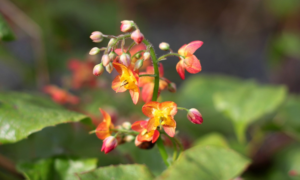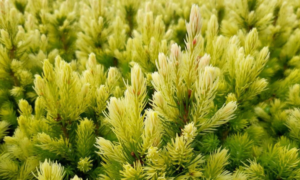We independently research, review, and recommend the best products. If you buy something through our links, we may earn a commission. Learn more.
Winter brings about thoughts of hibernation. But when there’s work to be done in the garden (which there always is!), the time to get going is now. My to-do list during this chilly time of year typically centres around planning and pruning. Where the latter is concerned, I know many novice gardeners find the thought of snipping away at their beloved plants tantamount to treason, but trust me: with a bit of know-how, it’s a rewarding experience for both you and your plants.
You see, pruning is essential for keeping your garden looking its best and promoting healthy growth in your plants. It’s not just about removing dead or diseased wood, either; it’s also an opportunity to shape your shrubbery and encourage them to grow in the way you always imagined they would. So, grab your secateurs, pruning saw and loppers…I’ll talk you through some of my techniques.
Don’t be a fool, invest in tools
I cant emphasise this enough: buy a good set of quality tools. A sharp pair of secateurs make all the difference. Not only will they cut down cutting time, but they’ll save you damaging your plants and increasing the risk of disease. You’d needn’t break the bank, either—just don’t go for the cheapest. Here are a few affordable models that should do the job:
If you haven’t got yourself a thick pair of gardening gloves yet, read this article for my pick of the best.
Tools in-hand? Perfect. Now take the time to assess your plants and consider their natural growth habit before you start snipping away. Remove any dead, diseased or damaged wood and any crossing or rubbing branches. It will help maintain the structure of your plants and prevent overcrowding. I’ve found it’s always integral to getting strong growth.
Priorities when winter pruning
First up are the winter-flowering shrubs like witch hazel. These magnificent plants deserve a bit of extra attention during the pruning process. After they’ve finished flowering, I cut back the flowered shoots to strong buds and watch as new growth emerges. This results in a healthy, bushy shrub that brings joy to my garden year after year.
Evergreens, like holly and yew, also benefit from winter pruning. Removing any crossing or overcrowded branches help maintain their shape and encourage strong growth. Yews, in particular, are incredibly versatile and can be trimmed into various shapes, from topiary balls to spiral standards. Just remember to keep the shape balanced.
Climbers and wall shrubs, like roses and clematis, also need a bit of love and attention during the winter months. Cut back any dead or diseased wood, shorten side shoots to two or three buds, and watch as they come back stronger than ever. It will also maintain the shape of your climbers and result in a better display of flowers come spring.
Last but not least, don’t forget about your fruit trees! Pruning fruit trees in winter is necessary if you want to encourage healthy growth and guarantee a good crop the following year. It’s really simple, I tend to cut back crossing or overcrowded branches and remove any shoots growing from the tree’s base.
A few more pruning approaches
- For deciduous shrubs, such as hydrangeas and buddleias, winter is a good time to remove any old or damaged stems and reshape the shrub if necessary.
- For roses, in addition to cutting backside shoots and removing dead or diseased wood, it’s also a good idea to thin out any crowded growth to allow for better air circulation and sunlight penetration.
- For shrubs with delicate foliage, such as ferns and hebes, it’s best to avoid hard pruning in winter, as new growth may be damaged by cold temperatures. Instead, remove any yellowing or brown foliage, and lightly trim back as needed to maintain shape.
My final winter pruning tips
- Make sure to disinfect your tools between each plant to prevent the spread of disease.
- Be mindful of the weather and avoid pruning on particularly cold or frosty days, as this can damage new growth.
- When making cuts, aim for a clean, angled cut just above a bud facing in the direction you want the new growth to go.
- Finally, don’t be afraid to experiment and try new pruning techniques, but remember to be patient – your plants will thank you for it in the long run!
And there you have it, the how-to guide for winter pruning that’ll have your garden thriving come springtime. From rejuvenating shrubs to keeping delicate ferns healthy, a little pruning now goes a long way. As the great Gertrude Jekyll once said, “A garden is a grand teacher. It teaches patience and careful watchfulness; it teaches industry and thrift; above all it teaches entire trust.” So trust in your pruning skills, sharpen your secateurs, and let’s make the most of this winter season.






